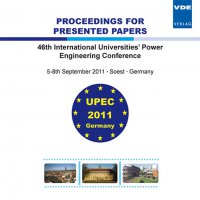Process Bus Configurations for Protection Schemes in the Digital Substation: IEC 61850
Konferenz: UPEC 2011 - 46th International Universities' Power Engineering Conference
05.09.2011 - 08.09.2011 in Soest, Germany
Tagungsband: UPEC 2011
Seiten: 6Sprache: EnglischTyp: PDF
Persönliche VDE-Mitglieder erhalten auf diesen Artikel 10% Rabatt
Autoren:
Sun, Xin; Redfern, Miles (University of Bath, UK)
Inhalt:
Modern power system protection schemes are virtually all based on microcomputer technology. They have been developed over the last thirty years and are still developing. The international communications specification IEC 61850 defines the communications infrastructure for the digital substation. This provides the foundations for future developments in both the protection and control of future power systems. The process bus is a key component of the specification and is fundamental to the operation of the protection scheme since it provides the communications between the primary transducers, the IEDs and the system actuators. The protection decision making is executed in the lED. As IEC 61850 has evolved, different configurations of process bus have been introduced. These include the star bus, the cascaded bus and the ring bus. Each of these has advantages and limitations. This paper will describe the different types of process bus, their implementations and their relative advantages and disadvantages. The paper will build on these designs and explain how these different bus structures can meet future demands to be met by the protection schemes of the future. Some of these needs are related to technical performance whereas others are dictated by operational needs. This includes an assessment of the mean time between failure and availability of the protection schemes for a transmission line application using various bus structures. The paper looks into how the process bus may develop further in order to meet future needs of protection concepts and implementations.


